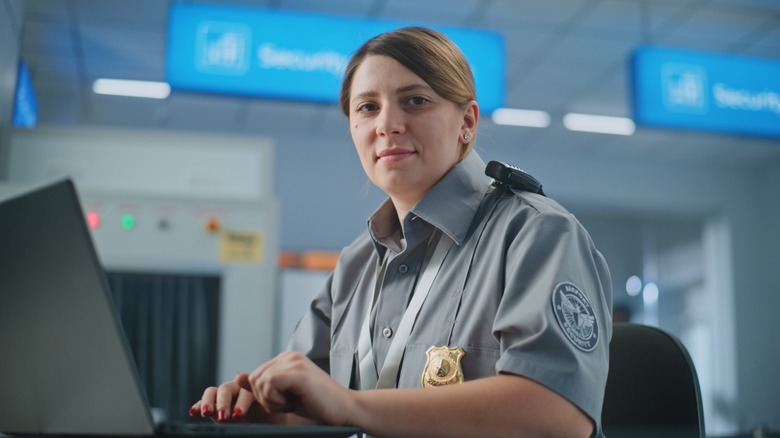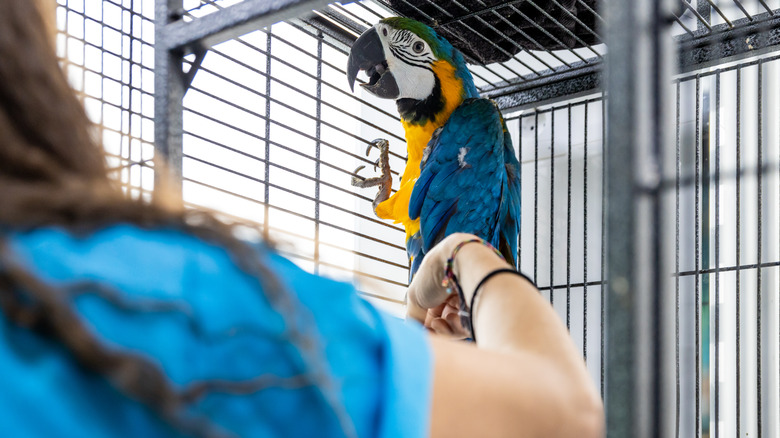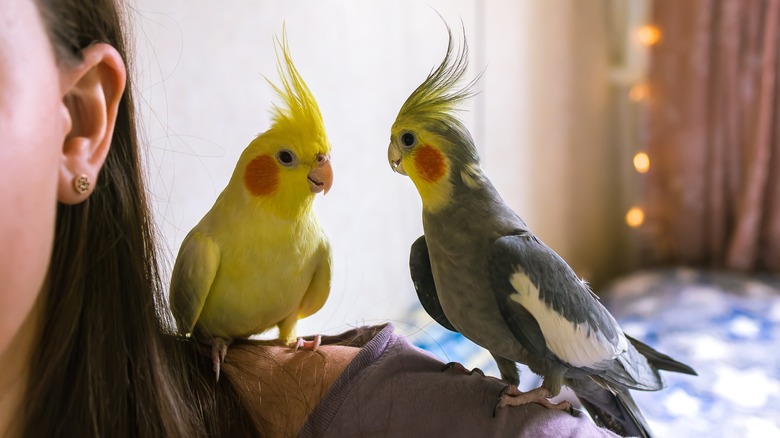We may receive a commission on purchases made from links.
It sounds like a comedy routine: Did you hear the one about the bird that flew 40,000 feet above sea level? It was in coach! (Pause for laughter). Anyway, this parakeet just flew in from New York, and boy, is its Boeing 747 tired. (Tap microphone). So, a guy is in an airplane, and he has a caged canary in his lap. People ask him, “What’s with the canary?” The guy says, “Oh, he’s got a meeting in Cleveland. I’m just his peanut inspector.” Thanks, everybody! I’ll be here all flight! Don’t forget to tip your flight attendant!
Okay, here’s what’s really funny: The Transportation Security Administration will likely let you bring a pet bird through airport security. Many species qualify as “small pets,” such as cockatiels, parrotlets, and lovebirds. Feathered friends are just one of the strange things you probably had no idea you can bring through TSA, though nothing else on the list comes with its own pair of wings.
You may wonder why anyone would do this, but there are lots of scenarios that make sense. Travelers might be moving to another community, and a multi-day drive would put too much stress on a bird. Maybe the animal is a gift for a friend or loved one. Believe it or not, “pigeons pageants” are a thing. Whatever the reason, TSA generally understands that certain types of birds and their corresponding humans may have to board a plane together, as long as they follow certain rules.
How to safely get your bird through TSA
Naturally, the bird must be a reasonable size; you can’t carry flamingoes through the checkpoint. It should also be stowed inside a carrier; the Texsens Bird Carrier Backpack is designed to humanely transport small animals on a plane, specifically pet avians. Such carriers come in all different designs, but most have transparent plastic, so the bird can see, as well as ventilation for breathing.
The tricky part comes at the actual checkpoint, as you’ll have to remove the bird from its enclosure. TSA agents will have to scan your carrier, but the X-ray is extremely dangerous to small animals. Many birds have clipped wings, so you can more easily hold them in the screening area; if your little friend is a (literal) flight risk, you’ll have to take special care, as more than one bird has found a new habitat in an airport ceiling. Once animal and carrier have been examined, you can put your bird back inside and be on your way; you can also feel confident that, in a world where you can take a properly packed lobster through airport security, you should have every right to bring a budgerigar.
But be aware: TSA and airlines are two distinct entities. You can walk around an airport with your bird in its carrier, and all you’ll get are the occasional side-eye from fellow travelers. Airlines themselves are a different story; policies vary widely from one carrier to another, so it’s imperative you contact customer service and double-check before you buy your ticket. A good number of domestic airlines will allow you to store a carrier under your seat, presuming it fits, but plan to confirm this — in writing, if possible — ahead of time.




